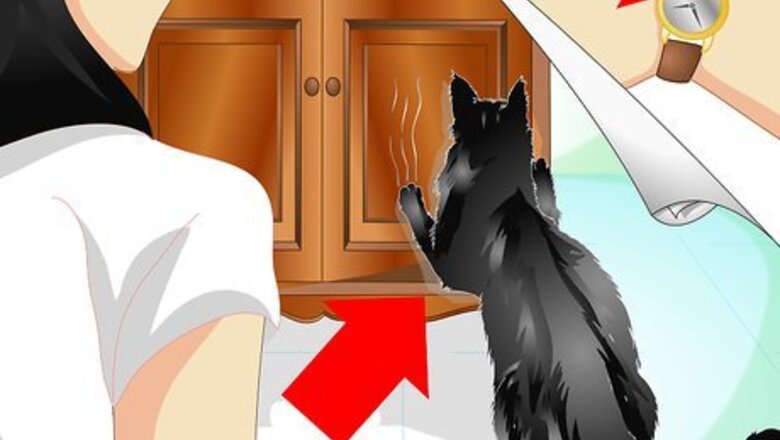
views
Offering Other Options
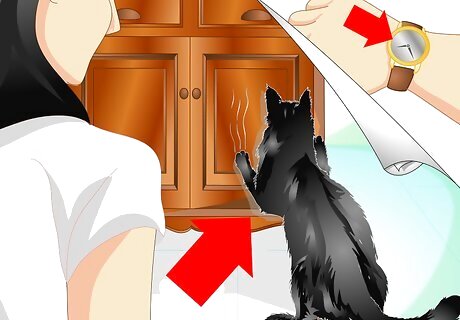
Pay attention to what your cat scratches and when. Typically, cats scratch to mark their territory, sharpen their claws, and stretch their bodies. Pay attention to when and what your cat likes to scratch to figure out how to offer a suitable replacement that will be equally enticing. Many cats have a preferred place and time to scratch, like right after a nap or when you come home. They also have preferences for the type of texture they like to scratch (often some type of nubby fabric that gives just the right amount of resistance).
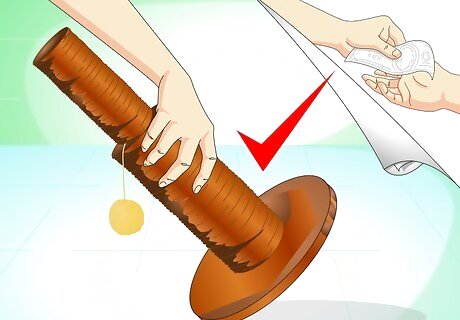
Buy a scratching post. Giving your cat somewhere else to scratch will make it less likely to scratch where it's not supposed to. Look for something that is as similar in texture to your furniture as you can find (including density and roughness of fabric). In many cases, cats prefer a scratching post that is similar in texture to tree bark. There are many products available, including some that are infused with catnip. You an also rub catnip into any type of scratching toy.
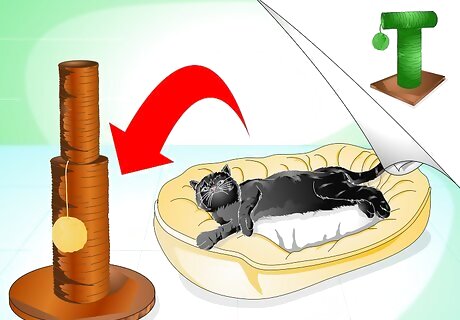
Put the post in a strategic position. Since you've observed your cat's habits, you are familiar with when and where she feels the urge to scratch. You should put the post somewhere that is convenient for her. For example, if she prefers to stretch on a post after a nap, put a scratching post near her bed. You might buy a couple of different types of scratching posts and put them in different places, especially if you have more than one cat. Place a post in every room that she frequents so that she won't be overcome with the urge to scratch furniture there instead.
Training the Cat
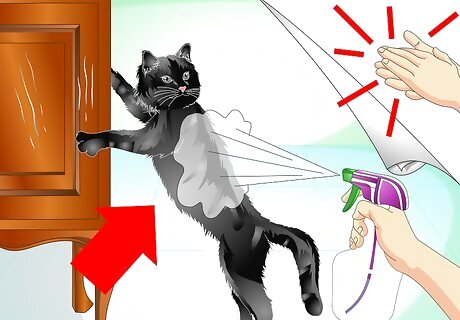
Stop her. If you see your cat in the act of scratching on your furniture, stop her immediately and scold her. Clap your hands suddenly or spray her with water. Then, physically remove her from the area. You can also use a remote deterrent, such as a motion-activate can of compressed air that will spurt at your cat she starts to scratch. This will deter a cat that won't scratch while you're there, but will start as soon as you're gone. Pick her up and move her to her scratching post. This will help her associate her urge to scratch with the post. Unless you catch her in the act, scolding won't help. She won't know what you're talking about.
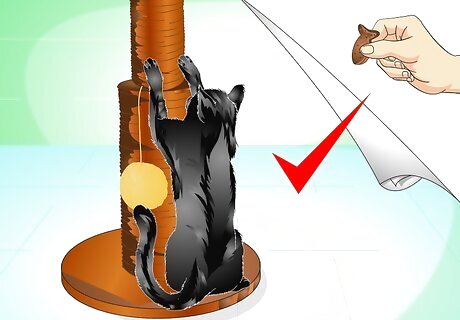
Reward good behavior. Cats, like dogs and like people, thrive on positive reinforcement for good behavior. Instead of punishing your cat for scratching the furniture, reward her for scratching the post. You can offer any reward that you know she likes. Many cats respond well to the following: Praise. Cats love your attention more than anything. Scratch her ears, tell her what a good girl she is, and use a sweet, affectionate tone of voice. A cat treat. Offer her a favorite treat as a thank-you for scratching the post. Catnip. This can be rubbed into the scratching post or used as a reward for after she has scratched there.

Don't yell. Most cats and kittens are annoyed by yelling, but it doesn't do much to deter their bad behavior. Yelling only teaches your cat to avoid you because you are unpredictable and maybe even dangerous.
Deterring Your Cat From Scratching
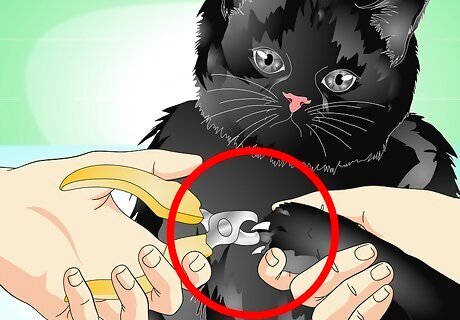
Trim her nails. One reason cats scratch furniture is to wear off the ends of their nails, which in the wild would wear down naturally from climbing and catching prey. If you keep her nails trimmed, she will have less of a physical need to scratch. You can use special cat claw clippers from the pet store, or a pair of human nail clippers or small scissors. Cat claws are retractable, so you have to access the claws to trim them. Holding your cat's paw, gently press on the knuckle just behind the claw to cause the claw to extend from the paw. Very carefully trim off the very tip of the claw, but no more than that. Be sure to do both front paws about every ten days and both back paws as needed. If you are uncomfortable with trimming her nails, ask a groomer or veterinarian to show you how.
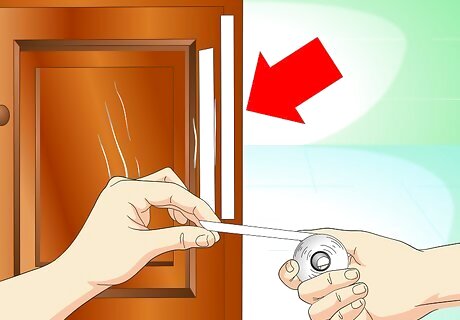
Cover the sides of the furniture. The cat likes the feel of your furniture under her claws, so you can deter her by covering it with something less appealing. Try double sided tape, sandpaper, aluminum foil, or even a plastic carpet runner.
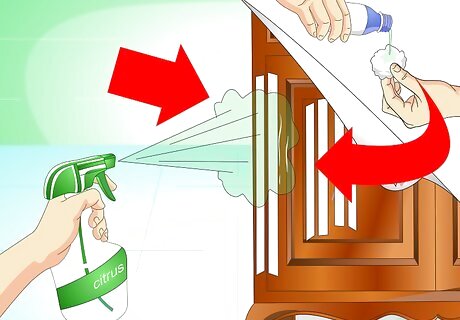
Deter her with scent. Cats naturally avoid certain scents like citrus or menthol, so you can use this to your advantage by putting these types of scents near the area she likes to scratch to deter her behavior. You can use essential oils on a cotton ball, or you can even buy spray products that are specifically formulated to deter cats and spray items you don't want your cat getting on. There are even natural products in health food stores.
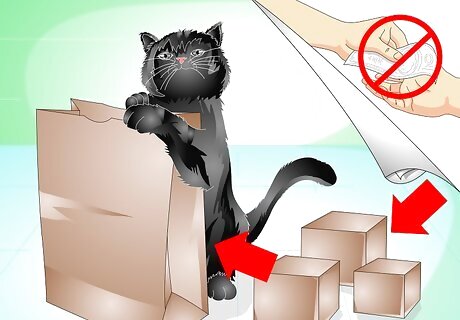
Give your cat interesting things to do. Sometimes cats scratch simply from boredom, so provide plenty of cat toys and other stimulating activities to keep her occupied. You don't have to spend any money; cats are fascinated with simple things like a cardboard box or paper bag. Set out a box or paper bag for her and watch her have fun.



















Comments
0 comment